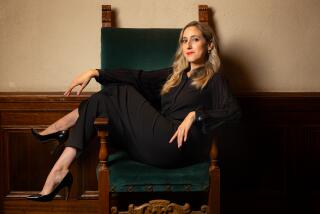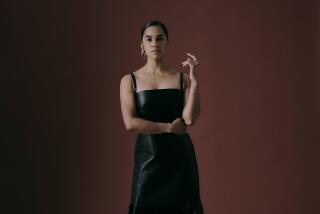BALLET REVIEW : ‘Nutcracker’ Is No Leap for Ruzimatov : In Los Angeles, the Kirov corps offers greater freedom and refinement than it did in Costa Mesa.
- Share via
LOS ANGELES — Farukh Ruzimatov’s American fans didn’t nickname him “Mr. Razzmatazz” for nothing. However, the 29-year-old Kirov Ballet firebrand from Tashkent muted the razzle-dazzle in his “Nutcracker” performance on Tuesday, opening night of the company’s engagement (through Jan. 3) at the Dorothy Chandler Pavilion.
Dancing the Nutcracker Prince opposite colleagues reviewed earlier in the month at the Orange County Performing Arts Center, Ruzimatov aimed for the maximum stretch in extension, the softest, most effortless jumps and turns. Most of all, he emphasized the kind of high Romantic ardor that made the act of kneeling to place his head in Masha’s hands a declaration of sublime tenderness.
Although not tall enough to serve as an ideal partner for the exquisite Larissa Lezhnina, Ruzimatov matched her sense of imaginative detail and even managed to minimize some of the worst innovations of Vassily Vainonen’s choreography.
This “Nutcracker,” you’ll remember, enlists four extra cavaliers to lift Masha in what should be the grand pas de deux. Ruzimatov, however, refused to be a fifth wheel and treated the quartet of porteurs like footmen, which, in a sense, they were. As far as he was concerned, the dance remained a love duet--and his intensity of belief made the other men as invisible as Bunraku puppeteers.
Otherwise this “Nutcracker” looked no different than during its American premiere engagement in Costa Mesa, except, perhaps, for a greater measure of refinement from the women’s corps and an enhanced sense of expressive freedom from Lezhnina. Adults pretending to be toy-obsessed moppets, a “Waltz of the Flowers” with women lifted like bowling pins, a fabled score mangled to accommodate the whims of the choreographer: not exactly the finest hour for Maryinsky classicism.
Nevertheless even when very bad, the Kirov “Nutcracker” proves very interesting--if only as the matrix for the version best known to American audiences: the 1976 Baryshnikov staging for American Ballet Theatre (shown annually--last Sunday locally--on PBS).
Vainonen’s “Nutcracker” came 42 years after the Ivanov original and Baryshnikov’s followed Vainonen’s after another 42. From those three sources alone you can watch the freedoms of the 19th-Century choreographer--to use children or mime in a ballet, for instance--erode under increasingly rigid 20th-Century notions of classicism and High Concept stagecraft.
Ballet in 1992 is in many ways a far more unified but much less varied theatrical experience than in 1892, and the Vainonen “Nutcracker” represents an important way station on that road. Not the best reason to buy a ticket, of course, but a far more sensible one than going for the choreography.
More to Read
The biggest entertainment stories
Get our big stories about Hollywood, film, television, music, arts, culture and more right in your inbox as soon as they publish.
You may occasionally receive promotional content from the Los Angeles Times.










